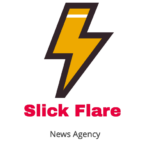How workplace technologies are harming our health 2023

Workplaces are increasingly using digital technologies as facilitators. Recent research found that 31% of employees experience “digital stress” due to hyperconnectivity.
“These tools, such as emails, teleconferencing tools, internal messaging, Internet access, etc. have disrupted our lives,” epidemiologist and former Director-General of Health Professor William Dab stated at the “Digital Stress, an Emerging Risk” conference.
“Could it be that these tools, or more precisely, the ways in which we use these tools, are turning against us?” he said at a workplace health and safety trade exhibition.
“What I find challenging, especially recently post-COVID and during lockdowns, is the proliferation of channels, to the point where we don’t know where things are coming from,” company lawyer Adrien Debré told AFP.
It complicates information flow. “Like Matryoshka,” he remarked.
“We are behind our screens all day long,” bank manager Jérôme said. Office video meetings are “rampant.”

“It’s exhausting,” he said.
Dab defines “digital stress” as “information overload,” “digital hardship,” or “technostress” when we have more information than we can absorb.
Stress’s “well-known” effects
The epidemiologist’s main concern is “over-connection,” which might cause “mental overload”.
“A vicious circle with a continuous pressure that makes us jump from one source of information to another,” and “losing control” are his observations.
This stress leads to burnout.
Dab adds, “As a doctor, I analyse this as a new form of addiction,” whose effects are still little understood despite stress’s “well known” effects.
These impacts are mental, cardiovascular, metabolic, and immunological.
Stress lowers performance, and remote work and digital technologies isolate us. “In short, these tools that are so helpful to us can also impair health and quality of work-life,” he stated.
Dab uses a mid-May research to demonstrate “few data” on the topic.

The Observatory of Information Overload and Digital Collaboration analyzed emails from over 9,000 people for two years.
31% of workers are hyperconnected.
Due to the small sample size (10 organizations), the study showed that 31% of employees are exposed to hyperconnectivity by sending emails after 8 pm more than 50 nights per year (117 nights for CEOs).
Over 50% of emails are answered in less than an hour, creating “a lot of digital noise,” 25% of which is caused by “replying to all.”
The research also tested “full concentration” (one hour without emailing). Executives get 11%, managers 24%, and employees 42%.
Epidemiologists lose “meaning, efficiency, and depth of analysis.” “We may be reaching a threshold of toxicity”.
The epidemiologist says “we can do something about it” by limiting information to “what is really essential,” keeping “slots where the screen is closed,” or doing physical or soothing activities.
“Not letting ourselves be possessed in the same way we don’t let ourselves be possessed by drugs” is the key.
